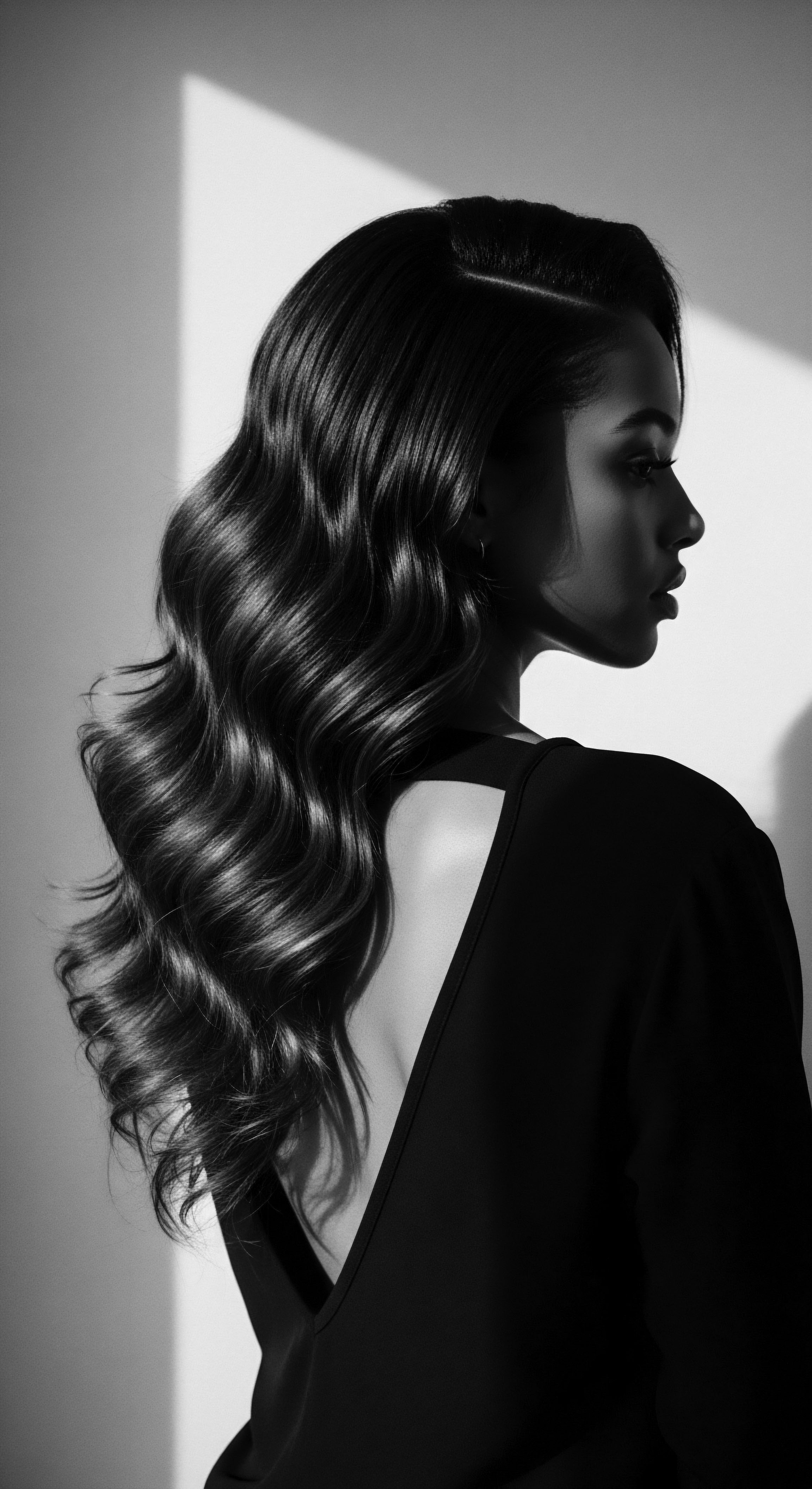
Fundamentals
Within Roothea’s living library, the concept of Textured Hair Preservation stands as a foundational pillar, a testament to the enduring spirit and inherent beauty of hair that coils, curls, and waves with a unique rhythm. This term, at its simplest, denotes the practice of safeguarding the structural integrity and inherent health of textured hair. Beyond mere physical upkeep, it speaks to a deeper, more resonant commitment ❉ maintaining the vitality of these distinct strands against the myriad forces that might seek to diminish their splendor. It is a dedication to ensuring that each helix retains its innate strength, its capacity for moisture, and its unique pattern, allowing it to flourish in its most authentic state.
The initial understanding of Textured Hair Preservation begins with the very architecture of the hair strand itself. Unlike straight hair, which often possesses a round or oval cross-section, textured hair exhibits an elliptical or flattened cross-section, contributing to its characteristic bends and coils. These structural variations influence how moisture travels along the hair shaft, how light reflects from its surface, and its susceptibility to mechanical stress.
The preservation journey, from an elemental perspective, involves recognizing these biological distinctions and tailoring care to honor them. It calls for gentle handling, the deliberate application of hydrating agents, and protective styling that shields the delicate strands from environmental aggressors and daily manipulation.

The Ancestral Whisper ❉ Early Meanings of Preservation
Long before modern science offered detailed analyses of hair morphology, ancestral communities possessed an intuitive grasp of Textured Hair Preservation. For these societies, particularly across various African cultures, hair was far more than a physical attribute; it served as a profound repository of identity, social standing, spiritual connection, and collective memory. The preservation of hair was thus intrinsically linked to the preservation of self, community, and heritage. Early practices were not merely about preventing breakage; they were about upholding a sacred aspect of being.
Consider the myriad ways hair communicated within these ancient frameworks. A particular style might signify a person’s age, marital status, tribal affiliation, or even a significant life event, such as a rite of passage or a period of mourning. To maintain these styles, and by extension, their underlying meanings, required diligent care.
The knowledge of which plants offered conditioning properties, which oils provided lubrication, and which braiding techniques offered protection against the elements was passed down through generations. This deep, inherited wisdom formed the earliest blueprint for Textured Hair Preservation, a testament to its profound cultural roots.
Textured Hair Preservation, at its core, is a profound commitment to sustaining the unique vitality and cultural significance of coily, curly, and wavy strands across generations.
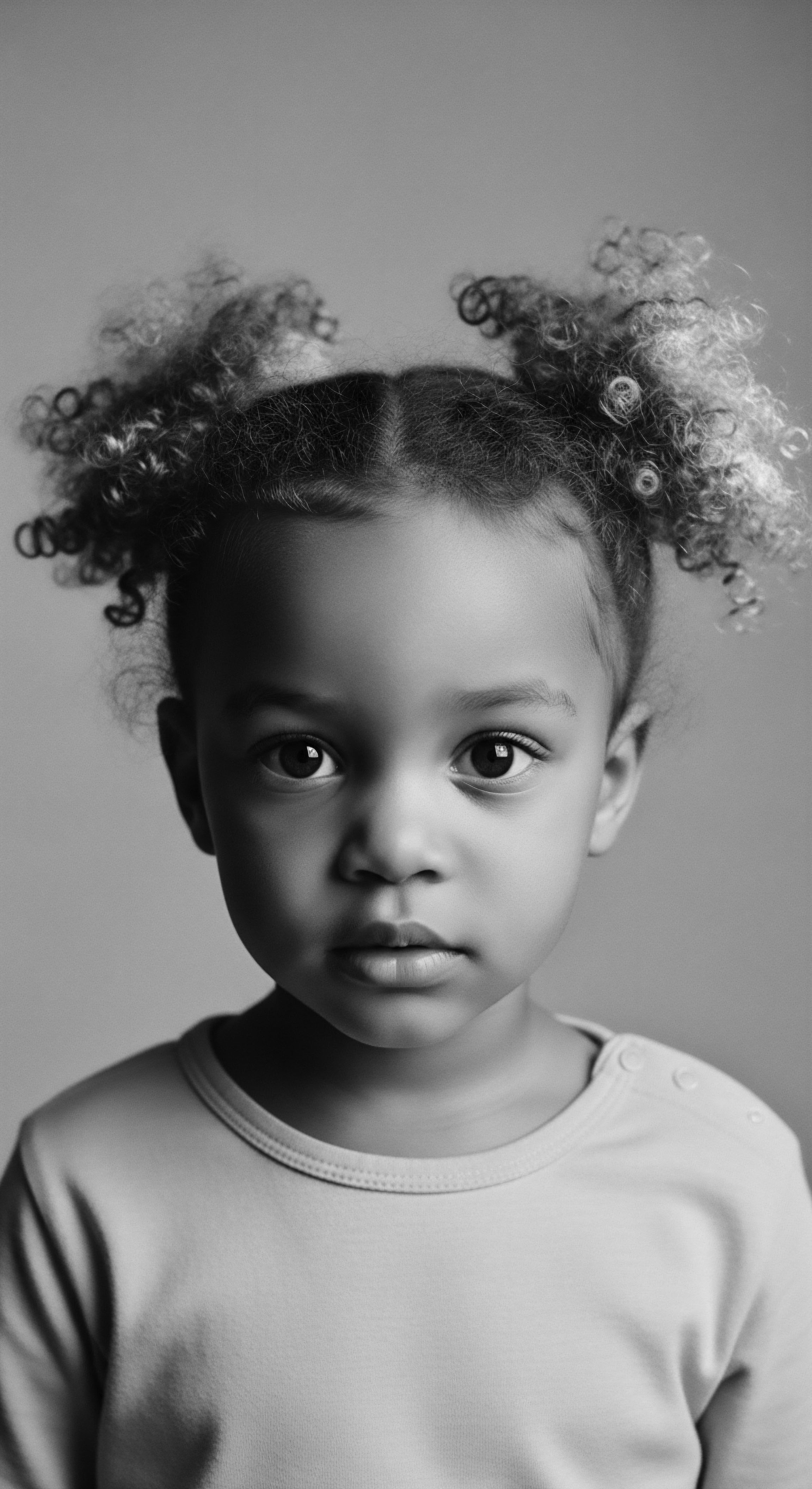
Elemental Care ❉ Foundations of Heritage Practices
The practical applications of Textured Hair Preservation in historical contexts often involved methods that resonate with contemporary natural hair care principles. These practices, honed over centuries, demonstrate a sophisticated understanding of the hair’s needs, even without the benefit of microscopes or chemical analyses.
- Botanical Remedies ❉ Traditional communities utilized a diverse array of plants and natural substances. Shea Butter, derived from the karite tree, was (and remains) a staple across West Africa, valued for its emollient properties that sealed moisture into the hair shaft and protected it from harsh climates.
- Plant-Based Oils ❉ Oils from various seeds and nuts, such as Coconut Oil or Argan Oil (though argan is more North African), served to lubricate, add luster, and provide a protective barrier. These were often infused with herbs for additional benefits.
- Protective Styling ❉ Braiding, twisting, and knotting techniques were not merely aesthetic choices. Cornrows, for example, which date back to at least 3000 B.C. in various African regions, were intricate styles that kept hair neatly gathered, minimizing tangling and breakage while symbolizing identity.
These early approaches to Textured Hair Preservation were inherently holistic. They recognized the hair as part of the body’s overall wellness, connected to spiritual and social dimensions. The act of hair care was often a communal ritual, a time for bonding, storytelling, and the transmission of knowledge from elder to youth.
This communal aspect reinforced the collective value placed on hair, further cementing its preservation as a shared cultural responsibility. The tangible benefits of these practices – reduced breakage, enhanced moisture, and prolonged style retention – were deeply understood and continually refined through lived experience.

Intermediate
Moving beyond the foundational understanding, the intermediate interpretation of Textured Hair Preservation deepens its significance, framing it as an ongoing dialogue between biological realities and historical narratives. This perspective acknowledges that the unique structural characteristics of textured hair – its numerous twists and turns, its susceptibility to dryness due to slower sebum travel, and its delicate protein bonds – render it particularly vulnerable to damage if not handled with informed care. Consequently, preservation takes on a more deliberate, scientific connotation, focusing on maintaining the cuticle’s integrity, balancing moisture and protein, and minimizing mechanical stress. Yet, this scientific understanding is never divorced from the profound cultural context that has shaped textured hair experiences across centuries.
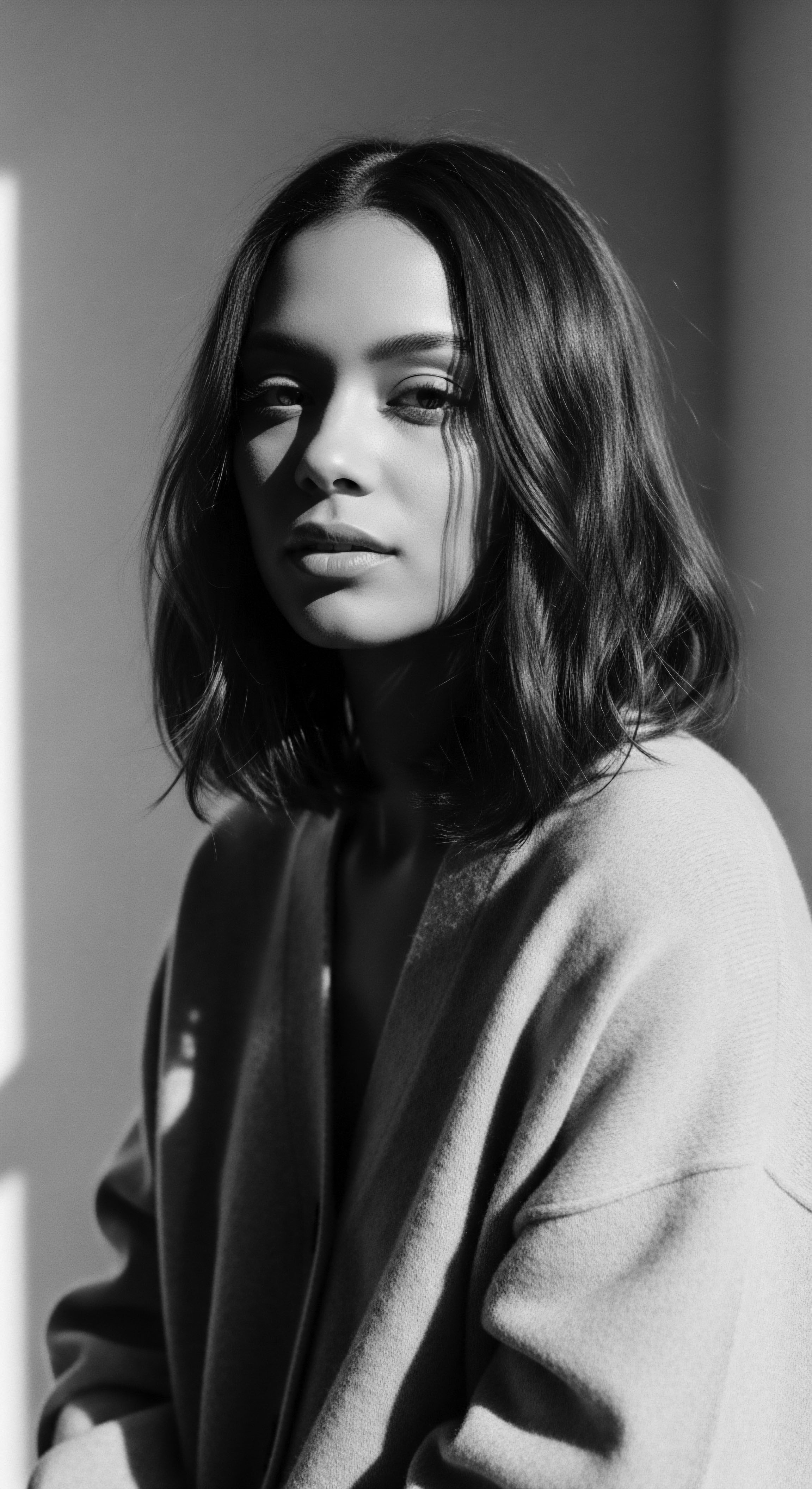
The Tender Thread ❉ Living Traditions of Care and Community
The historical journey of textured hair reveals that its preservation has always been a practice of resilience, particularly within Black and mixed-race communities. Forced displacement during the transatlantic slave trade severed many direct links to ancestral lands and traditional botanicals, yet the spirit of hair care endured. Enslaved Africans, stripped of nearly all personal belongings and cultural markers, clung to hair practices as a silent, yet powerful, act of defiance and a means to maintain a connection to their origins.
This period saw the adaptation of preservation techniques, utilizing whatever resources were available. Improvised combs from found materials and the use of animal fats or less ideal substances for moisture became symbols of ingenuity in the face of immense adversity. The communal aspect of hair care, where individuals would gather on Sundays—often their only day of rest—to wash, comb, and style each other’s hair, became a vital social ritual.
These gatherings were not just about aesthetics; they were spaces for shared stories, mutual support, and the quiet perpetuation of cultural identity. This enduring communal practice underscores a profound aspect of Textured Hair Preservation ❉ it is often a collective endeavor, a shared responsibility within a community.
The collective practice of hair care in diasporic communities stands as a living chronicle of resilience, demonstrating how shared rituals can preserve identity amidst profound historical disruption.
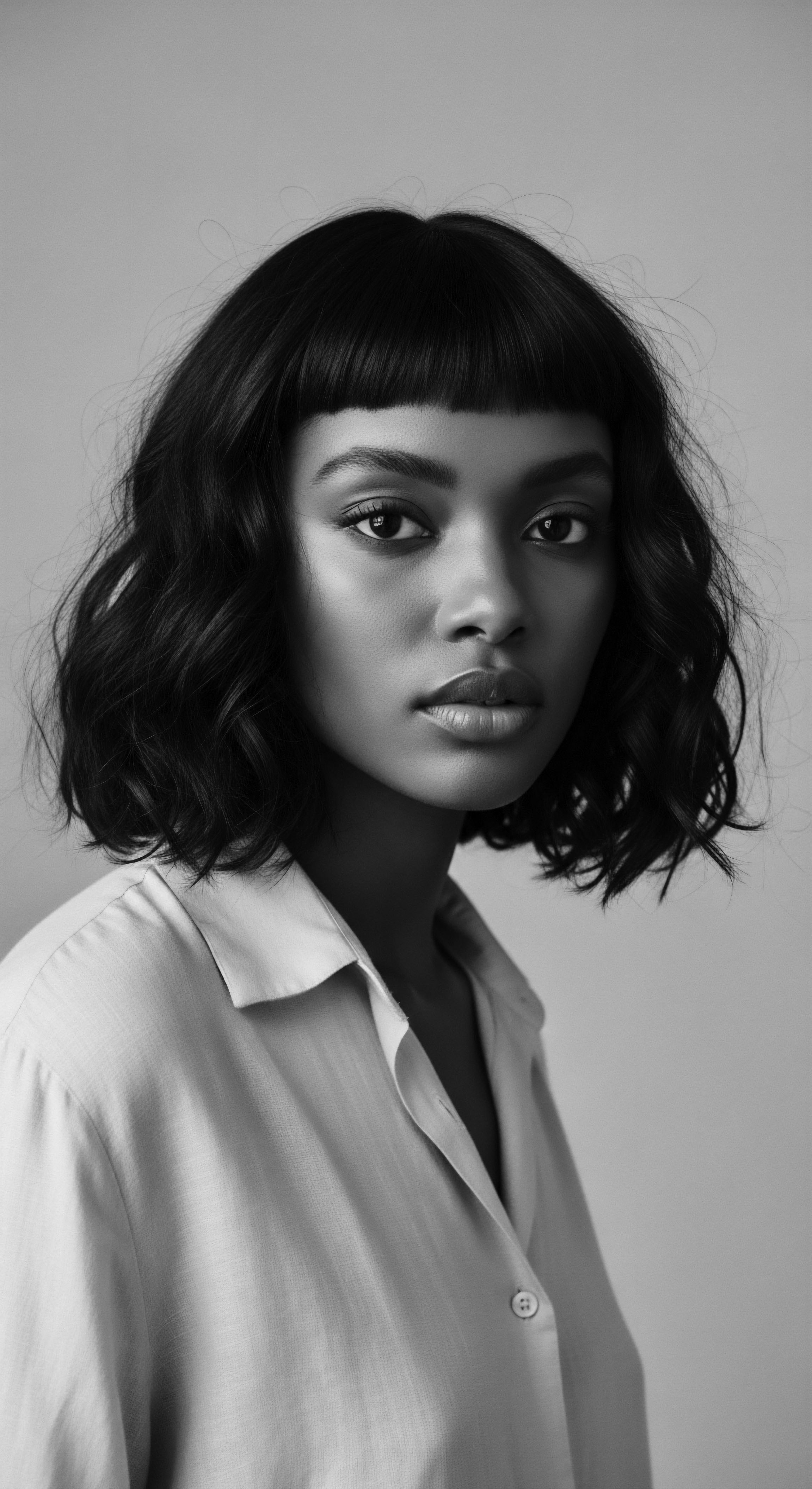
Navigating Adversity ❉ Hair as a Cultural Barometer
The post-slavery era brought new challenges to Textured Hair Preservation. The pervasive influence of Eurocentric beauty standards led to societal pressures to straighten textured hair, often through harsh chemical processes or heated tools. This era, while offering new products and techniques, sometimes undermined the inherent preservation of natural texture, favoring an altered appearance for social and economic acceptance. The term “good hair” became tragically intertwined with straighter textures, creating an internal hierarchy within communities that sought to navigate a world that devalued their natural coils.
Despite these pressures, the spirit of Textured Hair Preservation persisted. Women and men continued to find ways to care for their hair, often through secret remedies and private rituals. The economic landscape also began to shift, with pioneering Black women, such as Madam C.J. Walker, building empires around hair care products specifically designed for textured hair, offering a path to economic independence while addressing the unique needs of their community.
Her work, while sometimes associated with straightening products, also created a foundation for understanding the business of Black hair and the necessity of tailored solutions. This entrepreneurial spirit, born from a need to serve a marginalized community, further highlights the adaptive nature of Textured Hair Preservation.
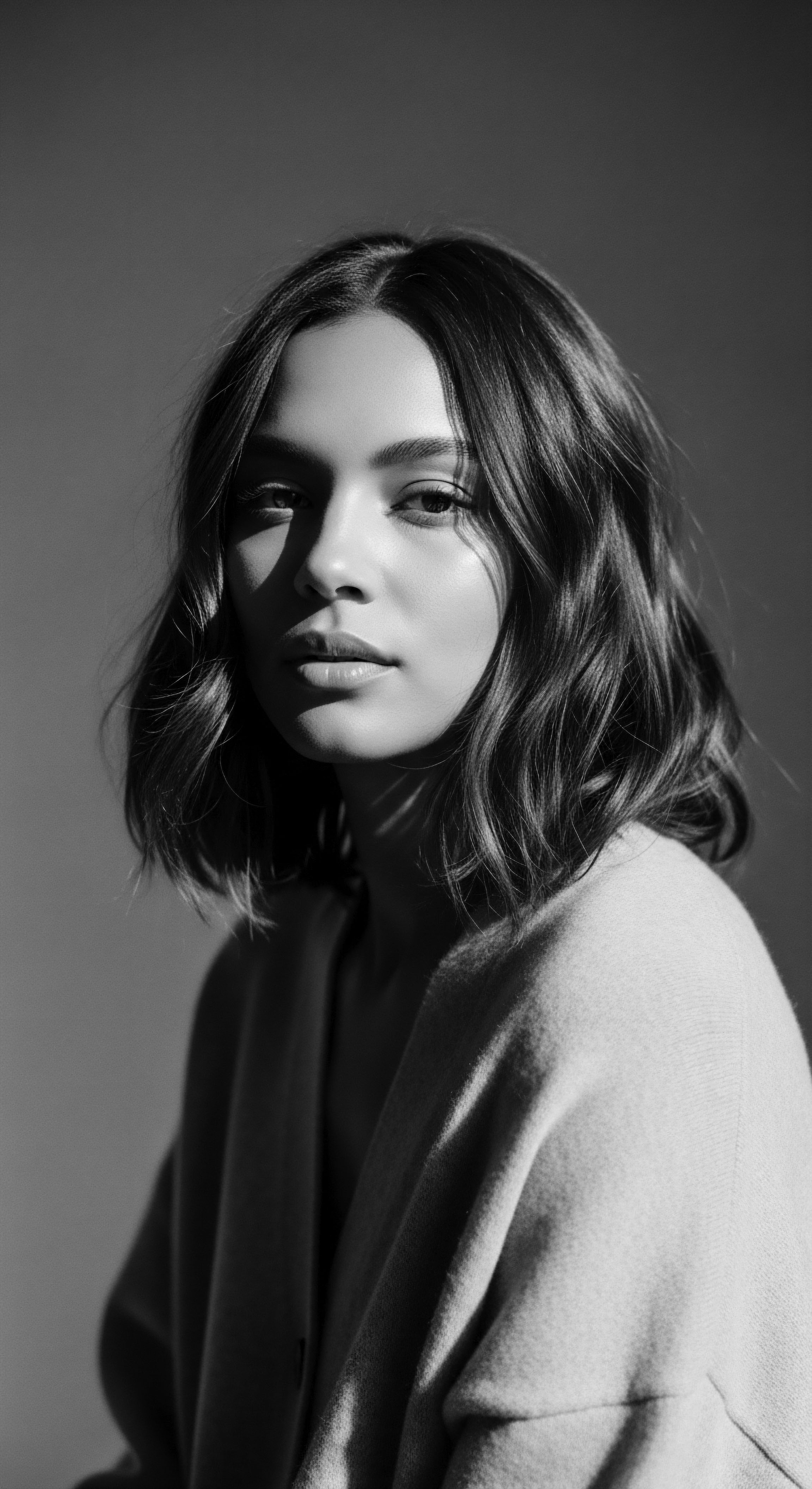
The Genesis of Modern Preservation Consciousness
The mid-20th century saw a resurgence of pride in natural hair, particularly during the Civil Rights Movement. The Afro hairstyle emerged as a powerful statement of Black identity, resistance, and self-acceptance, signaling a deliberate turn away from Eurocentric beauty norms. This period marked a renewed collective commitment to Textured Hair Preservation, not just for health, but as a political and cultural declaration. The embrace of natural textures meant a re-examination of care practices, moving towards methods that honored the hair’s innate structure rather than attempting to alter it.
This cultural shift brought about a deeper public awareness of the unique requirements of textured hair. It led to a demand for products and information that supported natural styles, prompting both independent innovators and eventually larger industries to reconsider their approaches. The understanding of Textured Hair Preservation at this stage became a blend of ancestral wisdom, scientific inquiry, and social activism, all working in concert to celebrate and maintain the inherent qualities of textured hair.
| Era/Context Pre-Colonial Africa |
| Traditional Preservation Methods Botanical oils (shea butter, coconut oil), herbal infusions, intricate braiding, thread wrapping (e.g. Irun Kiko). |
| Societal Influences & Adaptations Hairstyles conveyed social status, age, marital status, tribal identity, spiritual beliefs. Communal grooming strengthened social bonds. |
| Era/Context Transatlantic Slave Trade & Enslavement |
| Traditional Preservation Methods Resourceful use of available materials ❉ animal fats, improvised combs. Secretive braiding for communication (e.g. mapping escape routes, hiding seeds). |
| Societal Influences & Adaptations Forced head shaving as dehumanization. Pressure to conceal hair. Hair care as an act of resistance and cultural survival. |
| Era/Context Post-Emancipation to Mid-20th Century |
| Traditional Preservation Methods Continued use of oils and pomades. Rise of hot combs and chemical relaxers for straightening. |
| Societal Influences & Adaptations Eurocentric beauty standards influenced hair choices for social and economic assimilation. Emergence of Black hair care entrepreneurs. |
| Era/Context Civil Rights Movement & Natural Hair Movement |
| Traditional Preservation Methods Re-embracing Afros, braids, locs. Focus on natural texture and protective styles. |
| Societal Influences & Adaptations Hair as a symbol of Black pride, political resistance, and cultural identity. Growing demand for products catering to natural hair. |
| Era/Context This progression reveals a continuous thread of ingenuity and resilience in preserving textured hair, adapting through profound historical shifts while upholding cultural identity. |

Academic
The academic meaning of Textured Hair Preservation transcends simple definitions, positioning it as a complex interplay of biological imperative, historical resistance, and sociocultural affirmation. It is a rigorous examination of the mechanisms by which the unique structure of coily, kinky, and curly hair is maintained, alongside a profound exploration of its symbolic sustenance within diasporic communities. This concept demands a multi-disciplinary lens, drawing from dermatology, anthropology, sociology, and cultural studies to fully grasp its implications for health, identity, and social justice. The preservation extends beyond preventing physical damage; it encompasses the active safeguarding of a heritage that has often been targeted for erasure or devaluation.
From a trichological standpoint, Textured Hair Preservation addresses the inherent characteristics that render these hair types distinct. The elliptical cross-section of the hair shaft, coupled with frequent changes in direction along its length, creates numerous points of weakness where the cuticle layers are raised, making them more susceptible to breakage, tangling, and dryness. The natural curl pattern impedes the even distribution of sebum from the scalp to the ends, often resulting in dry, brittle strands.
Therefore, scientific preservation strategies focus on deep conditioning to seal the cuticle, minimizing mechanical friction, and utilizing humectants and emollients to attract and retain moisture within the hair fiber. This biological reality underpins the need for specific care protocols, many of which echo ancestral wisdom.

Echoes from the Source ❉ Ancestral Ingenuity and Scientific Validation
The profound historical trajectory of Textured Hair Preservation is nowhere more evident than in the ancestral practices that predate contemporary scientific discourse. These methods, often dismissed as rudimentary, frequently reveal an astute understanding of hair biology, albeit articulated through cultural rather than clinical frameworks. For example, the widespread use of certain botanicals in traditional African hair care finds compelling validation in modern ethnobotanical research. Studies indicate that many plants historically applied to hair possess properties that address scalp health, moisture retention, and even potential anti-inflammatory effects.
Consider the use of Chebe Powder by the Bassara/Baggara Arab tribe in Chad. This traditional practice involves applying a mixture of ground Chebe seeds and oils to the hair, braiding it, and leaving it on for extended periods. While the powder itself may not stimulate hair growth, its consistent application within protective styles is believed to aid in length retention by strengthening the hair shaft and sealing the cuticle, thereby preventing breakage.
This ancient method, passed down through generations, effectively addresses the fragility of highly coiled hair by minimizing manipulation and providing sustained conditioning, aligning with modern principles of protective styling and moisture sealing. Such practices exemplify a deep, experiential knowledge of Textured Hair Preservation long before the advent of chemical analysis.
The wisdom embedded in ancestral hair care practices often aligns with contemporary scientific understanding, revealing a timeless pursuit of Textured Hair Preservation.
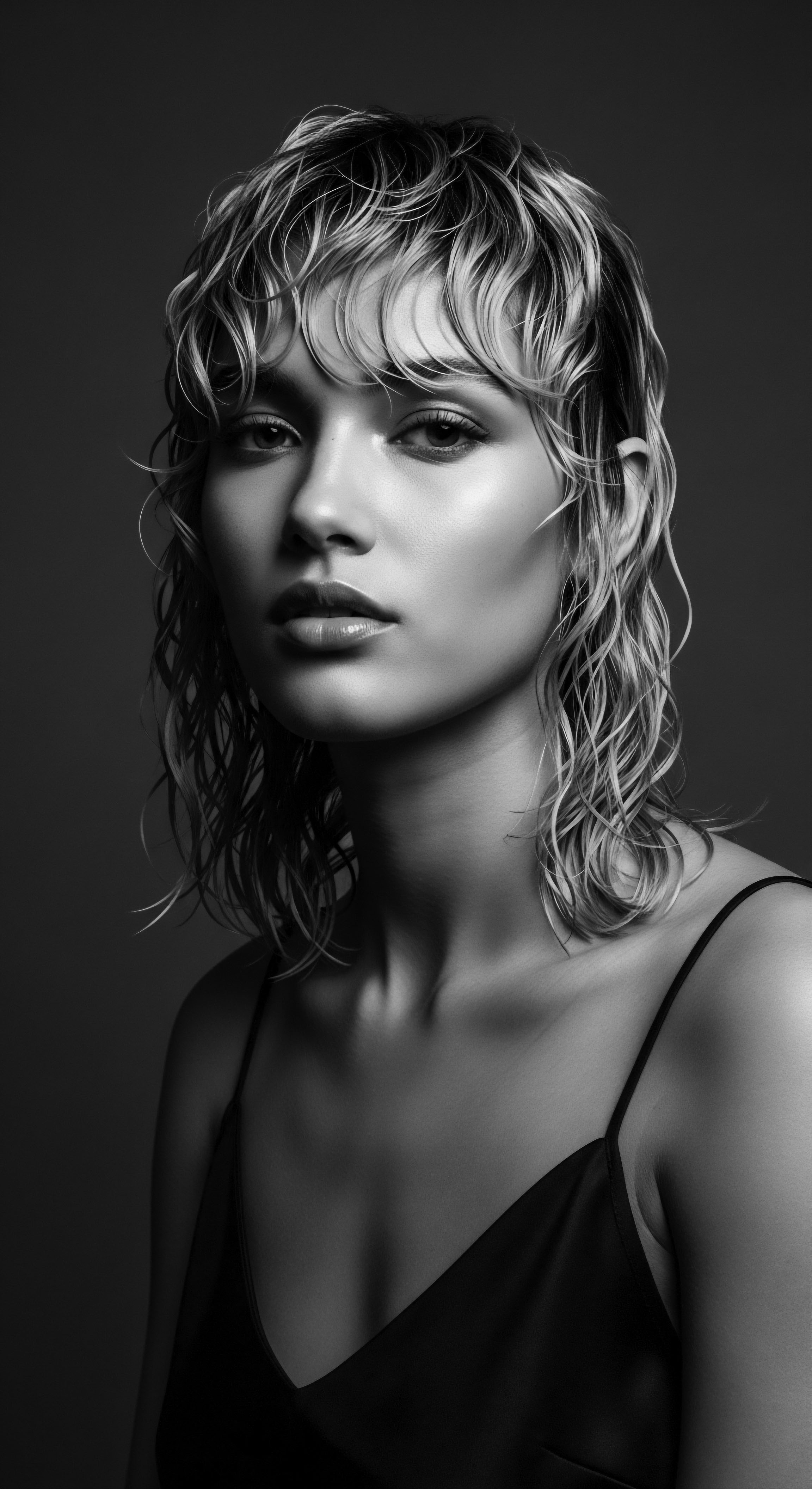
The Unbound Helix ❉ Hair as a Cartographic and Liberatory Medium
The history of Textured Hair Preservation is inextricably linked to the struggle for freedom and identity, particularly during the transatlantic slave trade. This period represents a stark example of how hair became a battleground for cultural survival. Slave traders frequently shaved the heads of enslaved Africans upon arrival, a deliberate act of dehumanization aimed at stripping individuals of their identity, severing their ties to their homeland, and erasing their cultural markers. Yet, even in this brutal context, hair remained a powerful medium for resistance and covert communication.
A poignant historical example, less commonly cited but powerfully illustrative of Textured Hair Preservation as a form of cultural and literal survival, involves the ingenuity of enslaved African women in the Americas. During their forced migration and subsequent enslavement, many women, particularly those with agricultural knowledge from West Africa, ingeniously braided rice seeds into their cornrows and other intricate styles. This practice served a dual purpose ❉ it preserved the seeds for future cultivation in a foreign land, thereby safeguarding a vital food source and a piece of their agricultural heritage, and it simultaneously provided a covert means of transport that escaped the scrutiny of their captors. This act, documented by historians and cultural anthropologists, speaks volumes about the profound significance of hair beyond aesthetics; it became a living archive, a clandestine vessel for the continuity of life and culture.
The cornrow patterns themselves were sometimes used as maps, guiding individuals to freedom, a remarkable testament to hair’s role as a tool for liberation. This historical instance demonstrates the ultimate expression of Textured Hair Preservation ❉ not just keeping the hair healthy, but utilizing it as a means of collective survival and the clandestine perpetuation of a people’s very existence and ancestral knowledge.
- Identity Erasure ❉ The forced shaving of heads during enslavement aimed to strip individuals of their unique tribal and social markers, thereby disconnecting them from their ancestral lineage.
- Resistance and Covert Communication ❉ Hair became a secret canvas. Braiding Patterns could convey messages or serve as maps for escape routes, while the concealment of seeds within styles ensured the survival of crops and cultural memory.
- Economic Empowerment ❉ Post-emancipation, the creation of Black-owned hair care businesses, like those pioneered by Madam C.J. Walker, offered pathways to economic independence and self-sufficiency for Black women.
- Symbol of Protest ❉ The rise of the Afro during the Civil Rights Movement directly challenged Eurocentric beauty standards, becoming a powerful symbol of Black pride, self-acceptance, and political assertion.

Contemporary Challenges and the Call for Holistic Preservation
In contemporary society, Textured Hair Preservation continues to confront systemic challenges, particularly in the form of hair discrimination. Studies reveal that Black women with natural hairstyles often face perceptions of being less professional, impacting employment opportunities and workplace advancement. A 2020 study found that Black women with natural hairstyles were more likely to be perceived as less professional and therefore less likely to gain employment compared to Black women with straightened hair. This ongoing bias underscores that the struggle for Textured Hair Preservation extends beyond personal care; it is a battle for social equity and the right to self-expression without penalty.
The passage of legislation such as the CROWN Act (Creating a Respectful and Open World for Natural Hair) in various U.S. states represents a crucial step in legally safeguarding the right to wear natural and protective hairstyles without discrimination. This legal framework supports the broader aim of Textured Hair Preservation by dismantling institutional barriers that have historically compelled individuals to alter their natural hair for social acceptance. It acknowledges that hair is not merely a cosmetic choice but a deeply embedded aspect of racial and cultural identity, deserving of protection and respect.
The academic discourse surrounding Textured Hair Preservation also examines the psychological and sociological impacts of hair choices. Research indicates that hair discrimination contributes to mental health stressors, including anxiety and self-esteem issues, particularly among Black women. Conversely, embracing and preserving natural textured hair is associated with increased self-acceptance and a stronger sense of cultural connection. This holistic view of preservation recognizes that the health of the hair is intertwined with mental and emotional wellbeing, reinforcing the idea that care practices are acts of self-affirmation and cultural reclamation.
| Dimension Biological |
| Core Principle for Preservation Maintaining cuticle integrity, moisture balance, and protein structure. Minimizing friction and manipulation. |
| Heritage Connection Traditional practices (e.g. Chebe powder, natural oils) intuitively addressed these needs through sustained conditioning and protective styles. |
| Dimension Cultural |
| Core Principle for Preservation Honoring diverse ancestral styling techniques, rituals, and the symbolic language of hair. |
| Heritage Connection Hair as a visual archive of tribal affiliation, social status, spiritual beliefs, and communal identity across African civilizations. |
| Dimension Historical |
| Core Principle for Preservation Acknowledging the resilience and resistance embodied in hair practices amidst oppression and discrimination. |
| Heritage Connection From rice seeds braided into hair for survival during enslavement to the Afro as a symbol of civil rights defiance. |
| Dimension Sociological |
| Core Principle for Preservation Challenging Eurocentric beauty standards and advocating for policy changes that prevent hair discrimination. |
| Heritage Connection The ongoing fight for acceptance of natural hair in professional and educational settings, leading to legislation like the CROWN Act. |
| Dimension Psychological |
| Core Principle for Preservation Fostering self-acceptance, confidence, and a positive self-image through the celebration of natural texture. |
| Heritage Connection Hair as a source of pride and empowerment, contributing to mental well-being and a stronger sense of belonging. |
| Dimension Textured Hair Preservation is a dynamic, multi-layered concept, drawing strength from ancestral wisdom and pushing towards a future of full recognition and celebration. |

Reflection on the Heritage of Textured Hair Preservation
As we draw this meditation to a close, the enduring legacy of Textured Hair Preservation emerges not merely as a set of practices, but as a living, breathing testament to human resilience and cultural continuity. The journey of the textured strand, from the elemental biology of its coil to its profound significance in shaping identity and community, is a saga etched in time. It is a story whispered through generations, carried in the gentle hands that braid, the fragrant oils that nourish, and the knowing glances that affirm shared heritage. The Soul of a Strand, indeed, holds within its very fiber the echoes of ancient drumbeats, the quiet strength of survival, and the vibrant declaration of selfhood.
This exploration has sought to honor the intricate dance between science and spirit, between the tangible care of the hair fiber and the intangible nourishment of the human spirit it represents. It has been a walk through ancestral groves where botanical wisdom reigned, a passage through periods of profound challenge where hair became a secret map and a silent protest, and a stride into contemporary landscapes where the fight for acceptance continues to unfold. Textured Hair Preservation, therefore, is not a static concept; it is a dynamic, evolving commitment. It beckons us to look beyond surface appearance and perceive the deeper cultural resonance, the ancestral echoes that shape every curl, every twist, every wave.
The reverence for textured hair, rooted deeply in its heritage, compels us to recognize that its preservation is a continuous act of reclamation and celebration. It is about acknowledging the genius of those who, despite immense pressures, maintained the traditions of care, adapting them to new environments and passing them forward as precious heirlooms. The strength of textured hair, both physical and symbolic, stands as a powerful reminder of a people’s capacity to endure, to create, and to define beauty on their own terms. May this understanding deepen our appreciation for every strand, seeing in it not just biology, but a vibrant connection to a rich and unbroken lineage.

References
- Byrd, A. D. & Tharps, L. L. (2002). Hair Story ❉ Untangling the Roots of Black Hair in America. St. Martin’s Press.
- Dabiri, E. (2019). Twisted ❉ The Tangled History of Black Hair Culture. Harper Perennial.
- Ellington, T. N. (Ed.). (2023). Black Hair in a White World. Kent State University Press.
- Ellington, T. N. & Underwood, J. L. (Eds.). (2024). Textures ❉ The History and Art of Black Hair. Kent State University Press.
- Tarlo, E. (2016). Entanglement ❉ The Secret Lives of Hair. Oneworld Publications.
- Weitz, R. (2004). Rapunzel’s Daughters ❉ What Women’s Hair Tells Us about Women’s Lives. Farrar, Straus and Giroux.
- Oforiwa, A. (2023). The History and Culture of African Natural Hair ❉ From Ancient Times to Modern Trends. AMAKA Studio.
- Tshiki, N. A. (2021). African Hairstyles – The “Dreaded” Colonial Legacy. The Gale Review.
- White-Jolivette, T. (2023). African American Women’s Experience of Wearing Natural Textured Hair. ScholarWorks | Walden University Research.
- Tharps, L. L. (2015). How does black hair reflect black history? BBC News.
